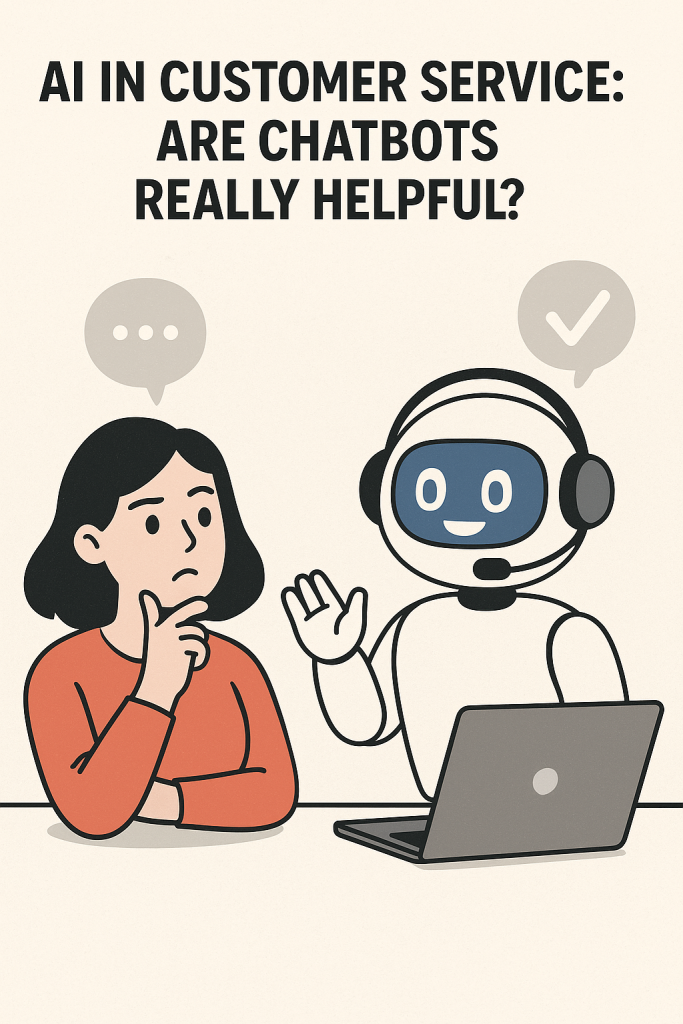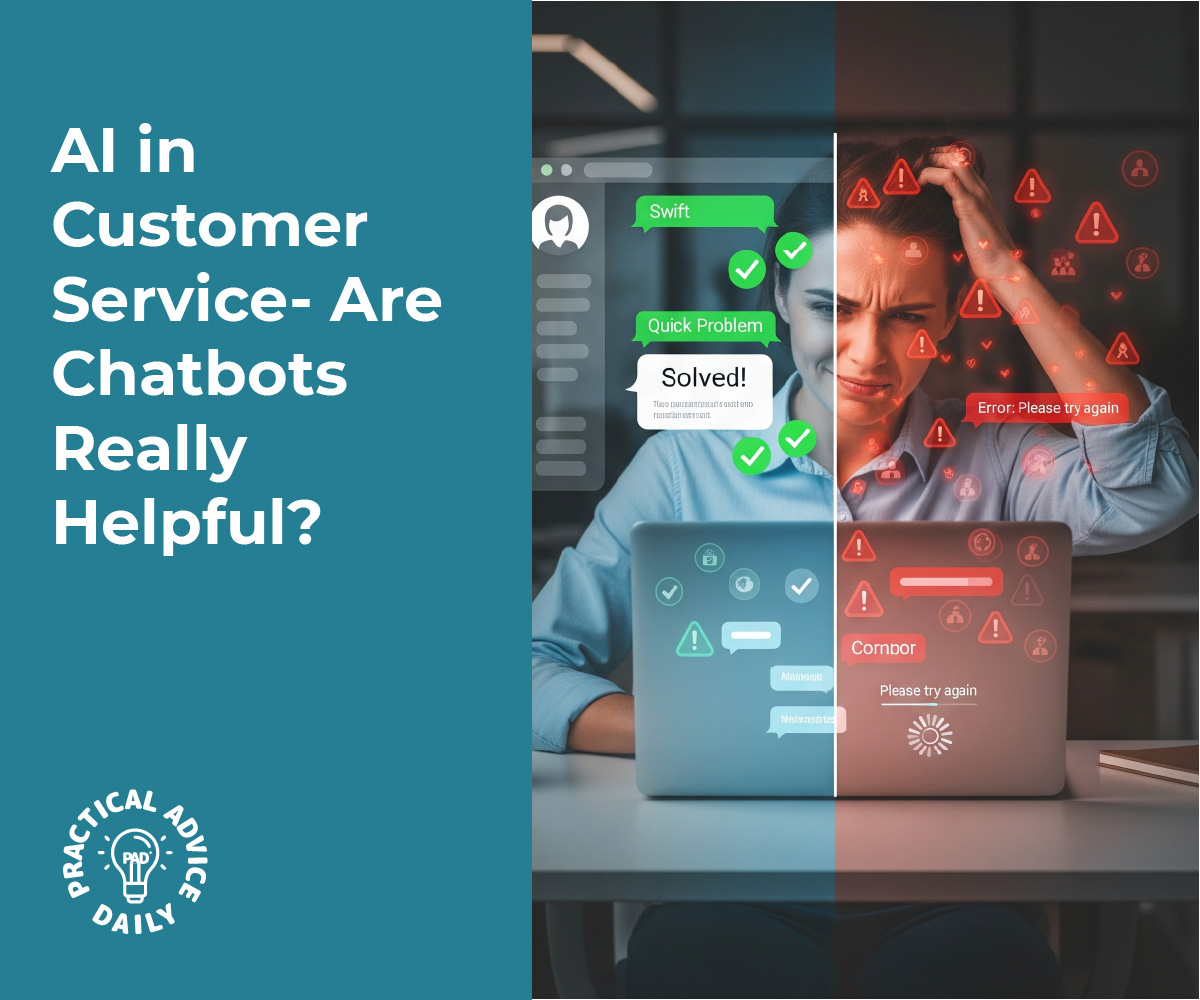Have you ever reached out to a company for help and been greeted by a chatbot instead of a person? It can feel quick and convenient—or sometimes downright frustrating. Businesses are turning to AI chatbots more than ever, hoping they can answer questions, save time, and cut costs. But the big question is: are these bots actually helpful?
In this guide, we’ll explore how chatbots are used in customer service, the good and the not-so-good sides, and when a real person may still be the better option. Don’t worry if you’re not tech-savvy—everything here is explained in simple terms.
Table of Contents
Key Takeaways
- Chatbots can give instant answers at any time of day.
- They’re great for simple, common questions like order tracking.
- Many people find them frustrating for complex or emotional issues.
- Businesses save money with chatbots, but sometimes at the cost of customer satisfaction.
- Knowing when to use a chatbot and when to ask for a human makes the experience easier.
How Businesses Use AI Chatbots
Companies across industries—from banks to online shops—are using chatbots to handle customer requests. These bots can:
- Answer frequently asked questions (like store hours or return policies)
- Track deliveries and update order status
- Help reset passwords or unlock accounts
- Direct customers to the right department
A big reason companies use them is availability. Unlike human agents, a chatbot never sleeps. That means you can get an answer at 2 a.m. without waiting until the morning.
The Benefits of Chatbots
For simple situations, chatbots can be very handy. Here’s why:
- Speed – A chatbot can instantly provide answers without keeping you on hold.
- Availability – They work 24/7, even on weekends and holidays.
- Efficiency – They can handle many customers at once, so you don’t have to wait in a long line.
- Cost Savings – Companies save money by using chatbots, which sometimes means lower costs for customers too.
Imagine you just want to check the balance of a gift card. Instead of waiting for a person, the chatbot can tell you right away.

The Downsides of Chatbots
But not all experiences with chatbots are smooth. Many people feel frustrated for these reasons:
- Limited Understanding – Chatbots often fail to understand questions that aren’t worded in a simple way.
- No Empathy – If you’re upset about a billing mistake, a bot won’t show the care or understanding a human would.
- Repetition – Sometimes you have to type the same information over and over, only to be transferred to a human agent anyway.
- Complex Problems – Chatbots struggle with tricky issues like disputes or special requests.
For example, if your internet goes out, a chatbot might just repeat basic troubleshooting steps instead of recognizing you’ve already tried them.
Real-Life Examples
- When Chatbots Shine: You want to know the status of your online order. The chatbot checks the system and tells you it’s arriving tomorrow. Quick and painless.
- When Chatbots Fail: You’re double-charged on your credit card. The chatbot doesn’t understand the issue and keeps sending you irrelevant answers. You end up waiting for a person anyway.
These examples show that chatbots can be helpful in simple situations but can quickly become a barrier when the problem is more complicated.
Tips for Handling Chatbots as a Customer
Here are a few ways to make your chatbot experiences less frustrating:
- Keep it simple – Use short, clear phrases like “track order” or “reset password.”
- Ask for a human early – If the chatbot isn’t helping, type “speak to an agent.”
- Use them for quick tasks – Save bots for easy things, like checking balances or confirming appointments.
- Stay patient – Remember, the chatbot is just a tool. Sometimes it takes persistence to reach a person.
Why Businesses Still Need Humans
Even with all the advances in AI, customer service still needs a human touch. People bring empathy, problem-solving, and creativity that machines can’t match. Many companies now use a mix: chatbots for simple tasks and human agents for complex ones.
This balance often gives customers the best of both worlds—fast service for easy questions and real understanding when things get tricky.
Final Thoughts
Chatbots are here to stay, and for quick and simple questions, they can be very helpful. But they are far from perfect. When it comes to emotional or complicated problems, nothing replaces the reassurance of a real person.
The next time you run into a chatbot, think of it as a helpful assistant for small tasks—but don’t hesitate to ask for a human when you need one. That way, you’ll get the best possible customer service experience.
